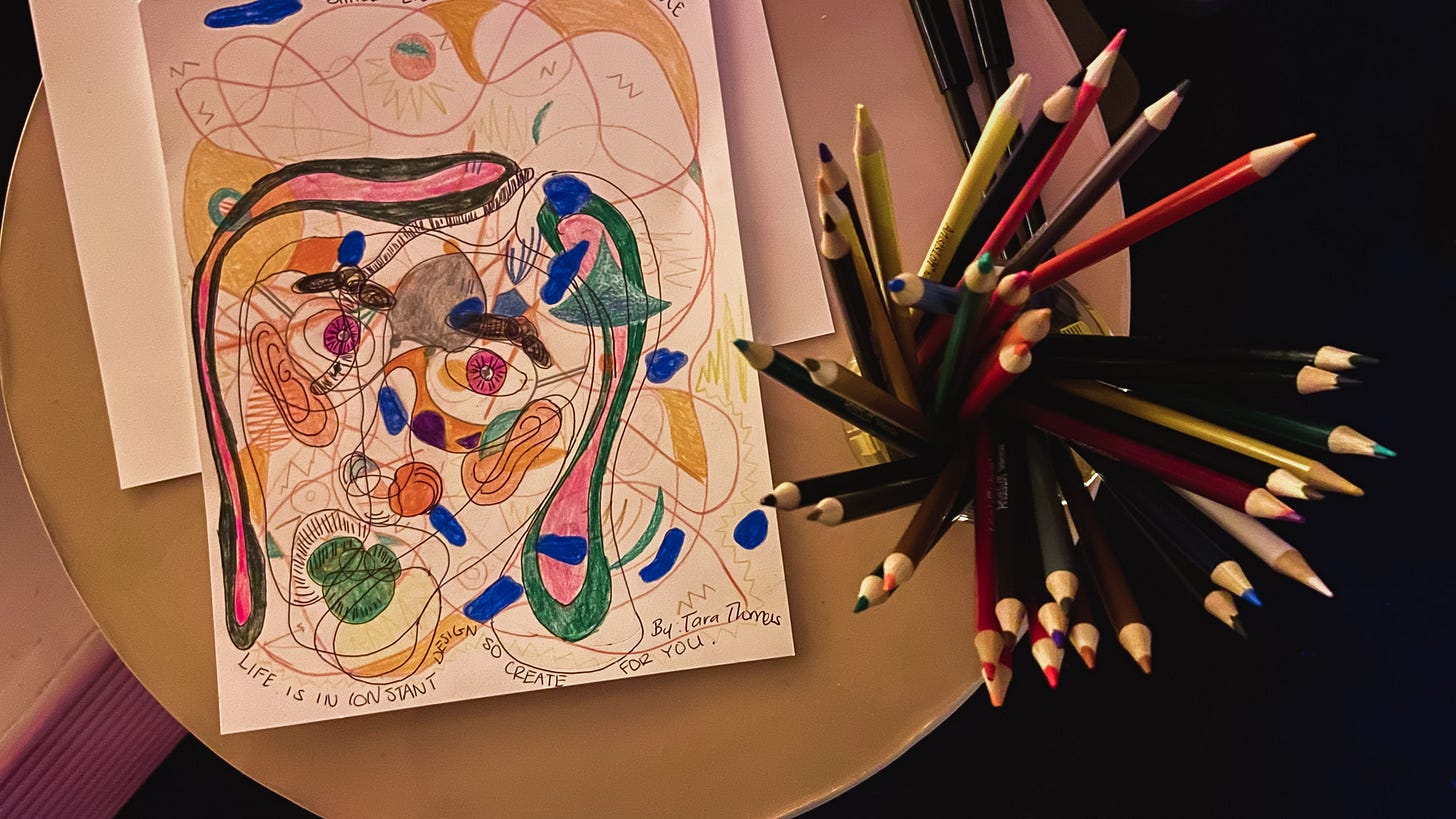Week 7 of the Artist's Way: the right attitudes for creativity
Hi folks! Through this newsletter I have been sharing my progress with The Artist’s Way, a self-help book for creative recovery by Julia Cameron. You can read more about the decision to start the twelve-week program here.
Happy Thanksgiving! Damn does it feel GOOD to have a five day weekend. I’m staying put in the city with fellow California stragglers, eating all the food and lying prone on the couch flipping through options on Netflix (how does anybody ever settle on what to watch? It’s total overwhelm).
Last week of The Artist’s Way was about “Recovering a Sense of Connection.” Are we being receptive to our creativity? Do we have the right mindsets to let ideas flow? The first ability Cameron mentions is listening, or observation. We can consider ourselves conduits of creativity and inspiration instead of straining ourselves to create something out of nothing.
“Art is not about thinking something up. It is about the opposite—getting something down.”
We find thousands of ideas and possibilities once we pay attention; it is our job to tune into the desired frequency we want—an innovative way to market our business or a background story for a fictional character for example. The solutions will come provided you stay patient and observant (it’s likely many of us drop our projects while waiting impatiently; I certainly have).
Another facet to welcoming in creativity is to kill perfectionism. Cameron includes a quote from Martin Ritt that “cerebration is the enemy of originality in art.” However, cerebration and critical thinking are touted as the be-all end-all in education. No wonder we welcome the logic/critic side of our brain to reign supreme.
To the perfectionist, there is always room for improvement. The perfectionist calls this humility. In reality, it is egotism. It is pride that makes us want to write a perfect script, paint a perfect painting.
Though turning off the critical side of my brain is a near impossible order, the idea of perfectionism being egotistical seems like a sensible way to turn the dial down. Why should I be so special to create great works from the get go?
The third attitude is to welcome risk. We place our limits at the brink of where we feel assured we can be successful, or at least decent. When we say we can’t, we mean we won’t unless we can do it perfectly (or at least not so badly that we embarrass ourselves). I grew up with a lot of fear, especially around physical matters, so I am grateful to have tried a lot of different activities that I knew I wouldn’t be so great at (ballet and jazz dance, rock climbing, pottery, axe throwing, etc.) Not excelling at new things isn’t fun by any means, but learning and seeing my own improvement is well worth it.
Still, there remain activities that I am hesitant to try—improv, acting, singing in public and not in a karaoke room, podcasting, all of which are activities that use my voice. This signals to me that getting comfortable with my voice will help me befriend risk and be a huge win for my confidence. What about you—if you didn’t have to do it perfectly, what would you try? What stops you from doing it?
Portrait Drink & Draw
I don’t know if I really enjoy drawing. Many people associate visual arts (and therefore drawing as a fundamental for most of those arts) with creativity, and to lack talent in this area somehow means we are not meant to be creative. I know this isn’t true, yet drawing still feels like the top level skill to be definitively considered an artist. It shouldn’t matter but it does, enough for me to usually avoid drawing beyond doodles and shapes.
For my artist date I headed to my first drink and draw night, specifically a portrait drawing event. There were around twelve people present at the Kin Euphorics space in Williamsburg, which is very millennial pink with fluffy clouds for decoration.
I was imagining we would mainly be drawing by and for ourselves during the night, but the event turned out to be a lot more interactive. Visual artist Jaleeca started with a meditation then we drew a bunch of circles on a paper, then passed it to the person on our left. This cycle continued while we drew lines through the circles, then waves, then filling in the white spaces.
After the page was sufficiently filled with abstract shapes and color, we all rose and were told to pick a partner with an alluring aura to partner with. The idea of openly evaluating everybody in the room and picking one filled me up with anxiety real quick, but thankfully a woman named Tara sauntered over towards me before I had to choose. After chatting for a while (I found out Tara was a chef at a vegan restaurant in Bed Stuy) we drew each other’s portraits on top of our colorful backgrounds. Above is Tara’s abstract portrait of me, complete with my eye freckle! Mine was a more literal portrait which she took home.
Once we were done everyone walked around to look at each other’s portraits. I was pretty embarrassed of my work after this; it was clear others had been drawing for years with their beautiful renderings. It felt synchronous that I was confronted with this feeling on a week where Cameron tackles perfectionism and risk. I haven’t drawn much, so why should my ego demand that I draw better? Why not try drawing without any expectation to do it perfectly?



